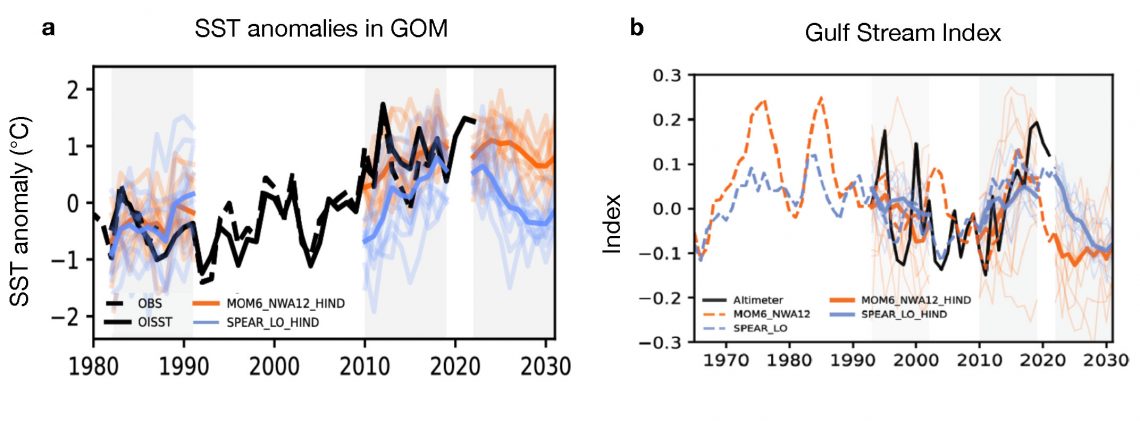September 3rd, 2024
Key Findings
- Dynamical downscaling enhances decadal prediction skill of Northwest Atlantic Shelf sea surface temperatures
- A temporary respite from rapid Northwest Atlantic Shelf warming is forecast for the coming decade
- The forecast warming pause is attributed to a modest strengthening of the Atlantic Meridional Overturning Circulation
- Over the long term, warming of the Shelf is projected to continue
Vimal Koul, Andrew C. Ross, Charles Stock, Liping Zhang, Thomas Delworth, Andrew Wittenberg. Geophysical Research Letters. DOI: 10.1029/2024GL110946
The Northwest Atlantic Shelf, from the coasts of North Carolina and Virginia to the Gulf of Maine to Newfoundland, has warmed more rapidly than almost any other part of the ocean in the last two decades. This warming has had severe impacts on marine ecosystems and coastal communities. Understanding the drivers of this warming and predicting whether it will continue is thus important for mitigating or adapting to future impacts.
Global climate models have struggled to accurately predict this warming due to limited resolution. Past regional modeling efforts focused on multi-decadal projections, which are unable to provide information about the next decade because they neglect predictive skill associated with internal variability. These gaps were addressed with the first-ever high resolution ensemble of dynamically downscaled decadal predictions. The downscaled regional simulations accurately predicted past oceanic variability at scales relevant to marine resource management, with skill typically exceeding global coarse-resolution predictions.
The authors forecast a temporary warming pause in the next decade, although warming is projected to continue over the long term. The predicted short-term pause is attributed to internal variability associated with a transient, moderate strengthening of the Atlantic Meridional Overturning Circulation and a southward shift of the Gulf Stream.
For the decadal predictions, GFDL’s SPEAR was run in its low resolution (approximately 1.0° in the ocean) SPEAR LO configuration. The authors downscaled the SPEAR LO simulations using a 1/12° ocean and sea ice model of the Northwest Atlantic, MOM6 NWA12, which is able to resolve important regional ocean features like the Gulf Stream. They ran a suite of retrospective ocean simulations and hindcasts to assess prediction skill and the sources of predictability. The downscaled model is being developed by GFDL as part of the decision support system for NOAA’s Climate, Ecosystems, and Fisheries Initiative to improve living marine resource management.
The authors emphasize that the predicted pause in the rapid warming is a temporary feature driven by internal climate variability. Over the long term, simulations using both SPEAR and the downscaled NWA12 under a high emissions scenario show that warming is projected to continue. These results suggest a short window of opportunity to adapt to changing climate conditions.



